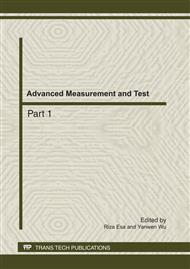p.195
p.201
p.208
p.213
p.219
p.223
p.229
p.235
p.241
The Low Beam Light Optical Configuration of High Brightness LED Headlamp
Abstract:
The low beam light optical configuration of high brightness LED headlamp is designed in this paper. When we design low beam light, three same optical units are overlapped to achieve sufficient luminous flux. LED optical source is arranged and packaged into a LED by using multi-chip in linear array. Each unit uses multi-ellipsoid reflector to converge light issued by multi-chip high-power LED light source, which covers partial light to form by light-dark blocking some of the light baffle to form an cut-line, the light is converged through optical lens to obtain the light-type that low beam light requires. The application of ASAP software implements the simulation, and the test results show that this design meets the national standard of low beam light.
Info:
Periodical:
Pages:
219-222
Citation:
Online since:
July 2011
Authors:
Keywords:
Price:
Сopyright:
© 2011 Trans Tech Publications Ltd. All Rights Reserved
Share:
Citation:


